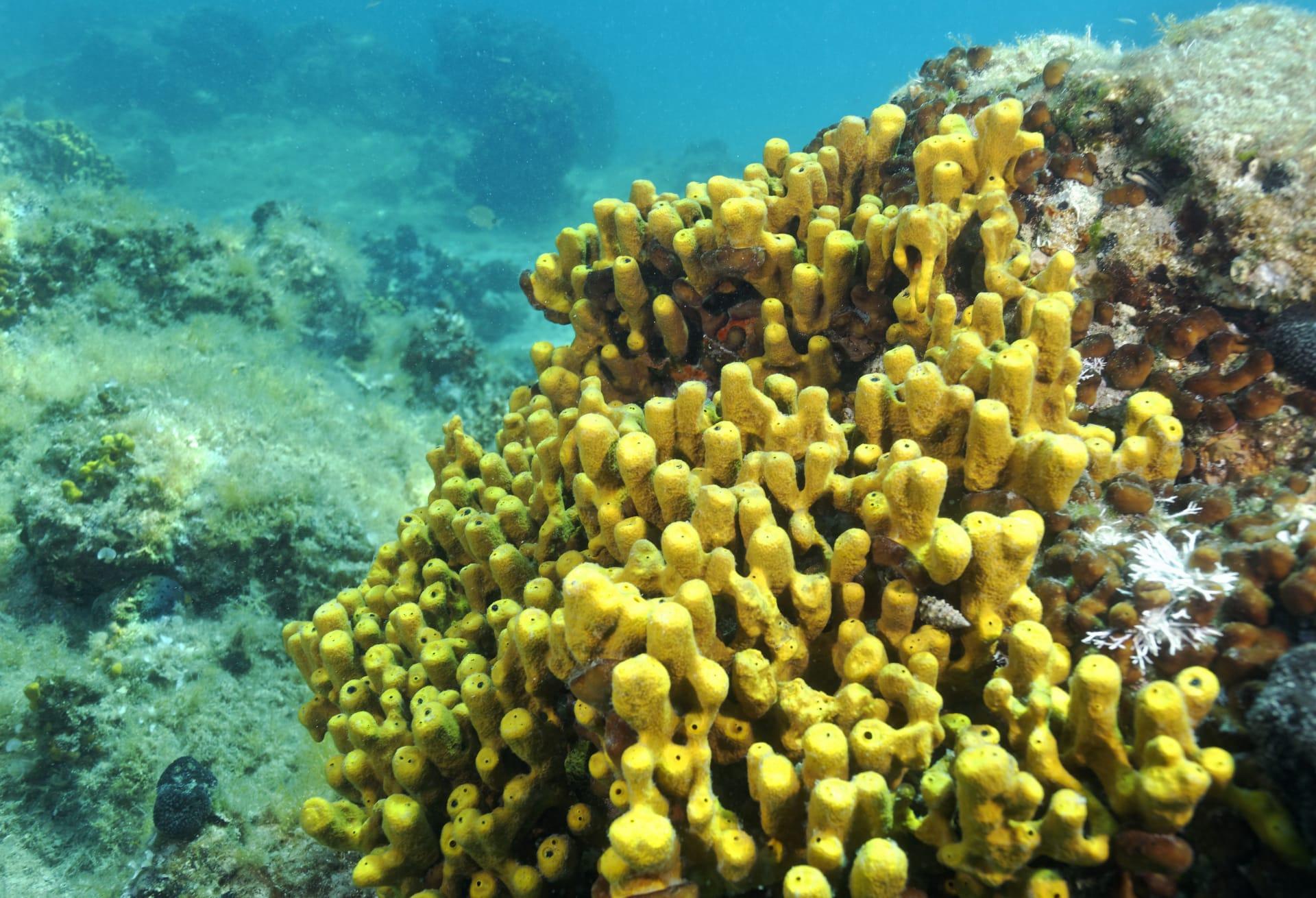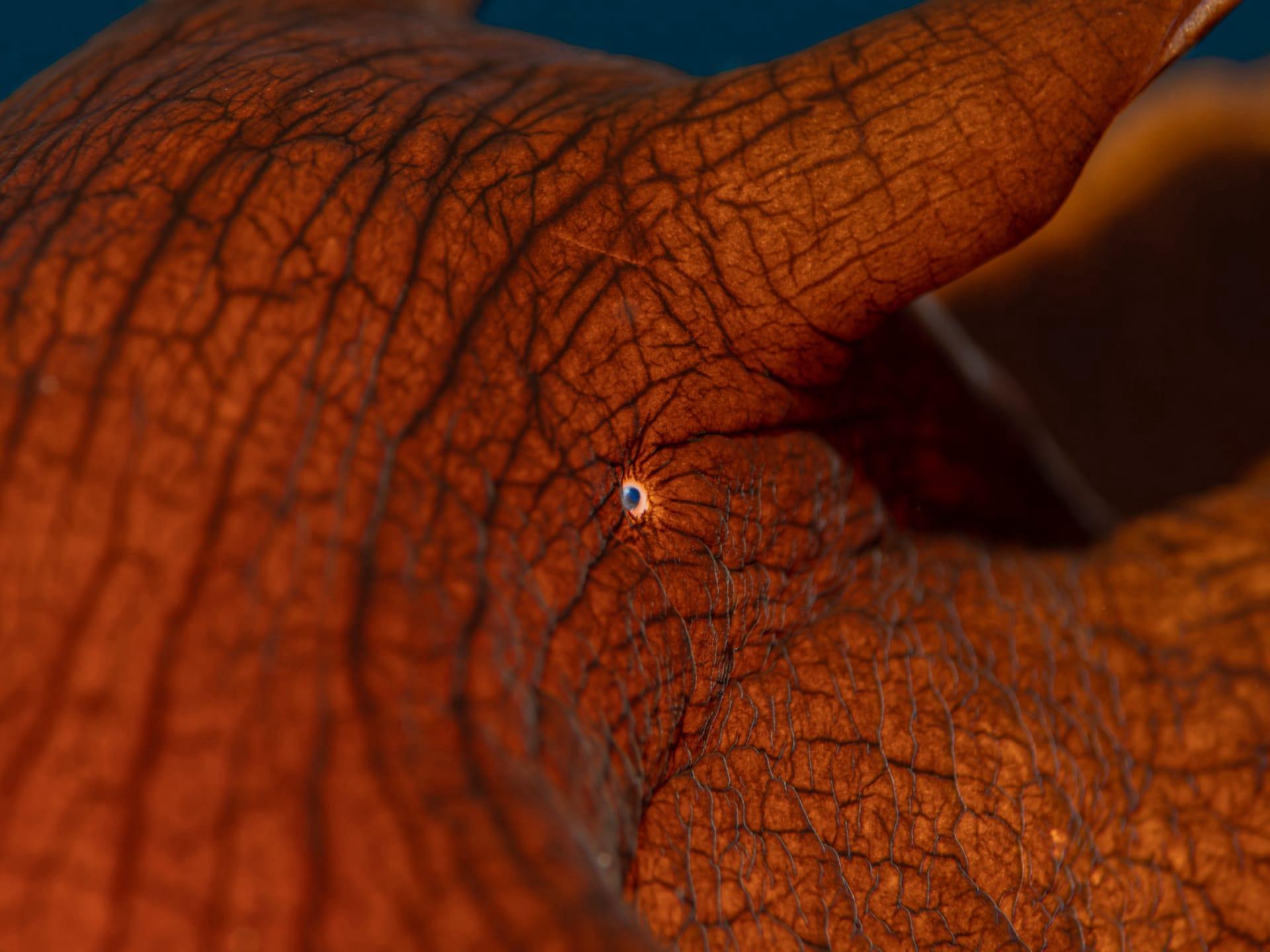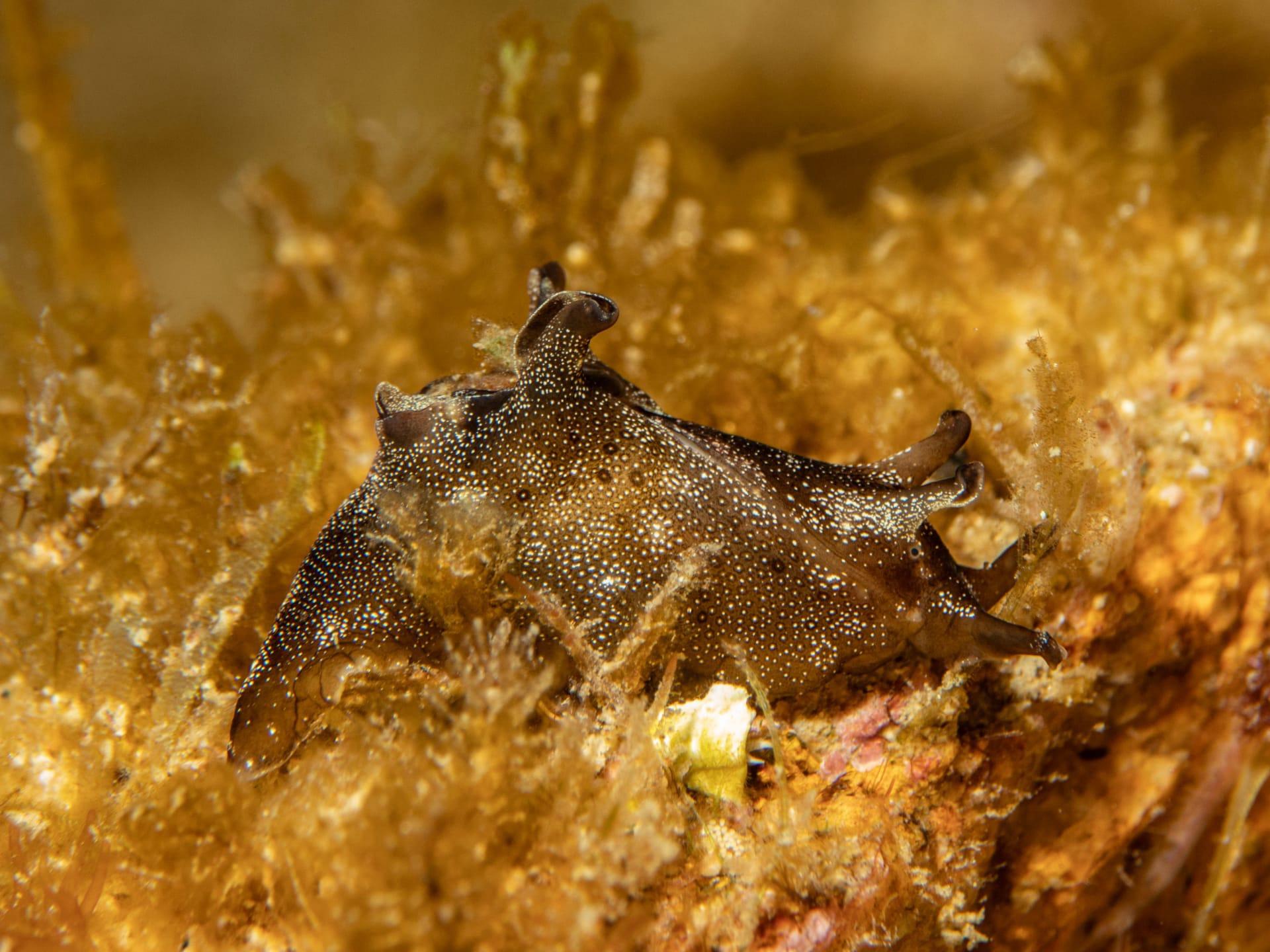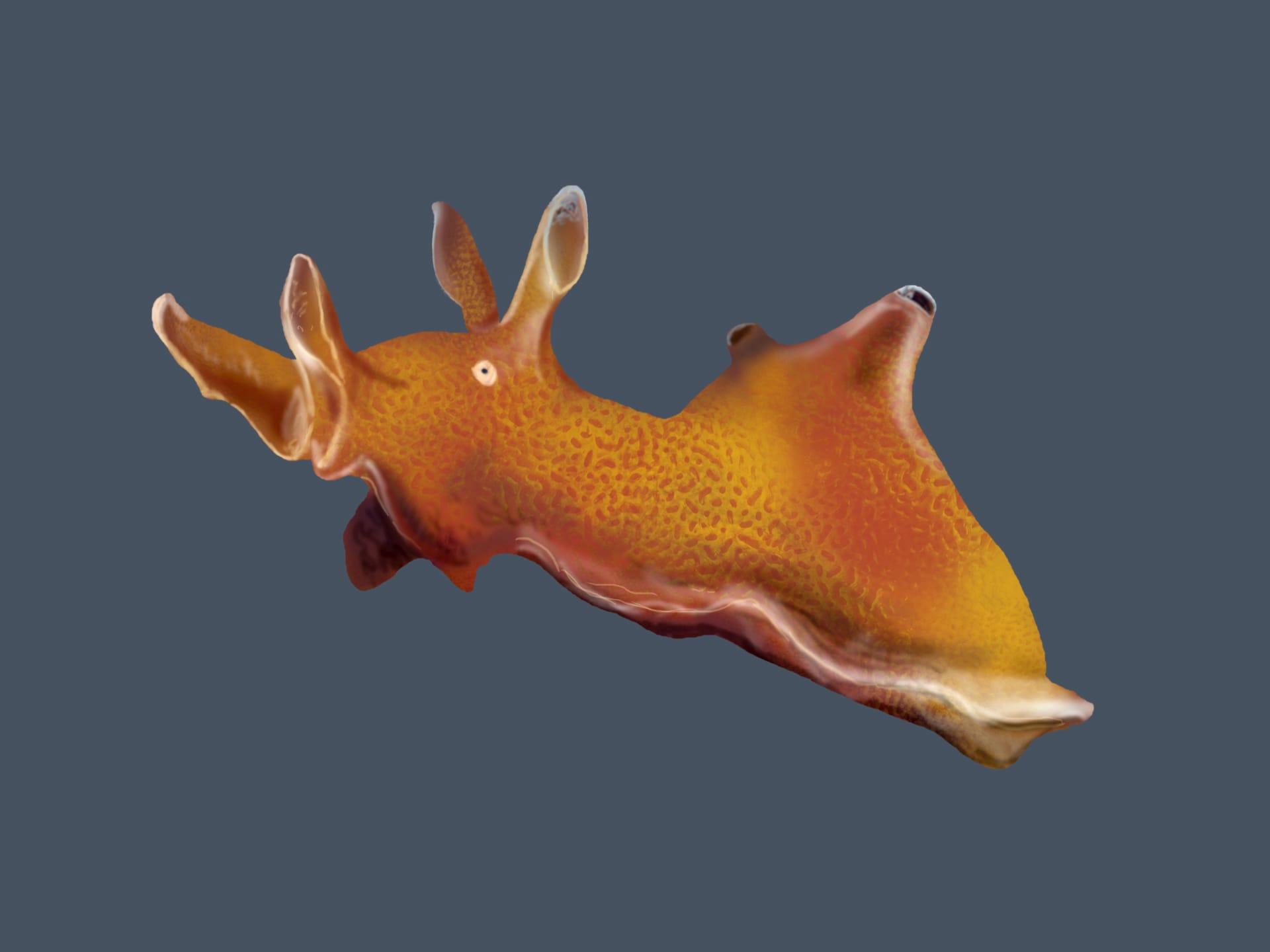Aplysia
- Home /
- Mini Encyclopedia /
- Animal /
- Aplysia
1
Aplysia, commonly known as sea hares, belong to the class Gastropoda within the phylum Mollusca. This family, Aplysiidae, encompasses a variety of species, each uniquely adapted to its marine environment. These creatures are distinguished by their soft, often large bodies, which can extend up to 75 centimeters in some species, and their small internal shell or lack thereof, which is a significant deviation from the typical mollusk profile. Their coloration, which ranges from dark browns to greens, often mirrors the algae and seagrass they inhabit, providing a natural camouflage against predators.
Sea hares are predominantly found in shallow waters along the coasts, thriving in temperate to tropical climates. Their distribution spans across the globe, from the Atlantic coast of North America to the warm waters of the Pacific around Australia and New Zealand. These mollusks favor sandy or rocky substrates where they can graze on their primary food source, algae. The specific habitats vary among species, with some preferring the shelter of seagrass beds, while others reside in tide pools or along rocky shorelines, adapting to the dynamic intertidal zone.

2
Question: Do sea hares possess a harmful sting like jellyfish, given their sometimes vivid and warning coloration?
Answer: Contrary to common misconceptions, sea hares do not sting. Their colorful appearance may suggest toxicity or the presence of a sting as a defense mechanism, similar to that of jellyfish or certain sea slugs. However, sea hares employ a different strategy for protection. When threatened, they release a cloud of purple ink, which confuses predators and allows the sea hare to escape. This ink, derived from the red algae they consume, is not toxic to humans but can be irritating to some marine predators.

3
One of the sea hare's most remarkable survival strategies is its ability to blend into its surroundings. This camouflage extends beyond mere coloration; sea hares can also mimic the texture of the algae and seagrass they inhabit. This ability to become 'invisible' in their habitat is crucial for evading predators and quietly grazing on algae.
In addition to camouflage, sea hares have developed a unique chemical defense mechanism. They can secrete substances from their skin that deter predators. These chemicals, which are often distasteful or toxic to potential threats, are derived from the sea hares' diet of red and green algae. This dietary assimilation of toxins into their own defenses exemplifies the intricate connections within marine ecosystems and the complex survival strategies of sea hares.

4
In marine ecosystems, sea hares play a dual role as both prey and grazer. Their grazing activities are crucial for controlling the growth of algae, preventing overgrowth that can smother coral reefs and other marine habitats. By maintaining a balance in algae populations, sea hares contribute to the overall health and biodiversity of their ecosystems.
Furthermore, sea hares are an important link in the marine food web. They serve as a food source for a variety of predators, including sea stars, larger fish, and even other sea slugs. This predation is a natural population control mechanism for sea hares, ensuring their numbers remain in balance with the carrying capacity of their environment. Their presence and abundance are indicators of the health of coastal ecosystems, making them a species of interest for marine biologists and ecologists.

5
Film: "The Secret Life of Sea Hares" is a documentary produced in the United States in 2018. It explores the fascinating world of sea hares, focusing on their unique biology, behavior, and ecological significance. The film takes viewers on an underwater journey to various habitats around the world where sea hares thrive, highlighting their interactions with other marine species and their critical role in maintaining the balance of marine ecosystems.
Book: "Marine Mollusks in Action: The Life of Sea Hares" by Dr. Helen Marston, published in the UK in 2020, provides an in-depth look at the biology and ecology of sea hares. Dr. Marston, a marine biologist with a focus on molluscan behavior, combines years of research with stunning underwater photography to bring the world of sea hares to life. The book covers their life cycle, feeding habits, and defense mechanisms, making it an invaluable resource for both scientists and marine enthusiasts.
Book: "Seagrass Shadows: Aplysia and Their Ecosystems" by Dr. Liam Connors, released in Australia in 2021, delves into the intricate relationships between sea hares, seagrass beds, and coastal marine ecosystems. Dr. Connors explores how sea hares contribute to the health of seagrass habitats and the broader marine environment. This work is particularly noteworthy for its focus on conservation, highlighting the importance of protecting sea hare populations and their habitats for the overall well-being of coastal waters.